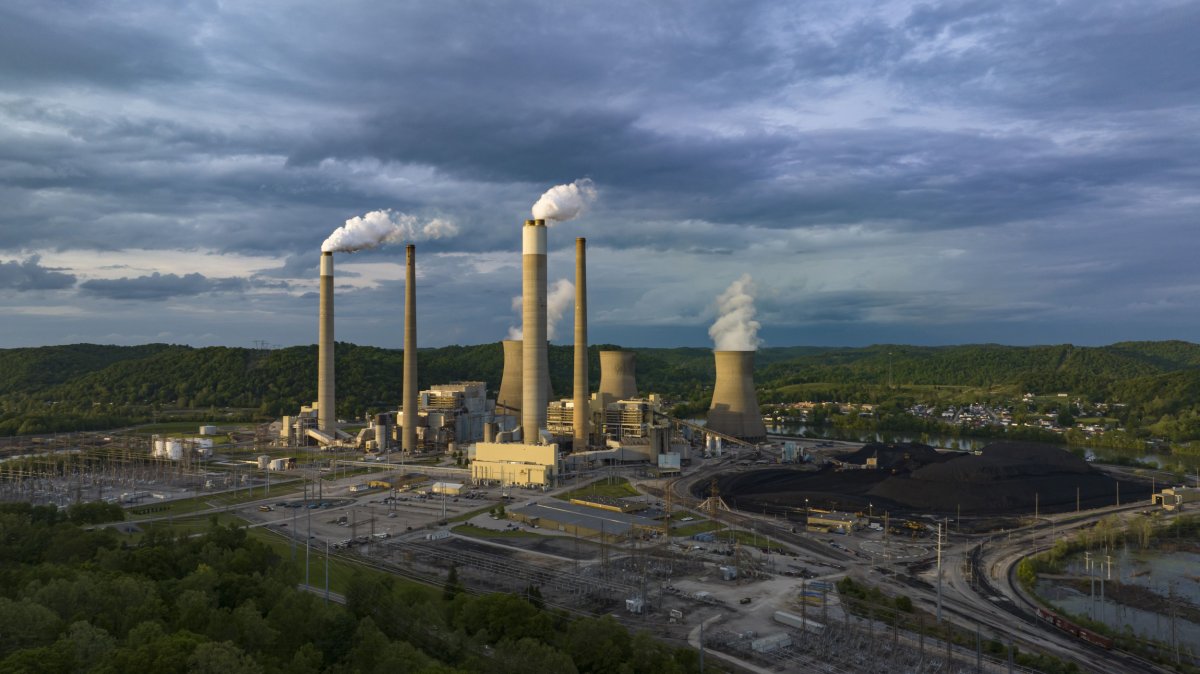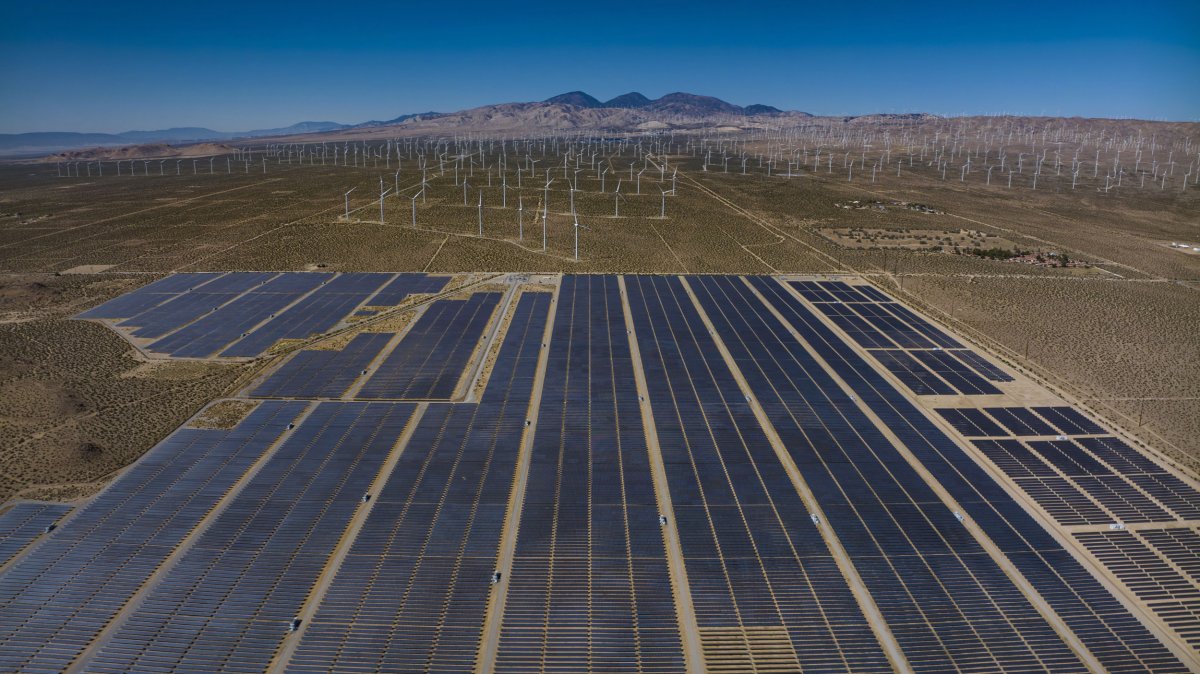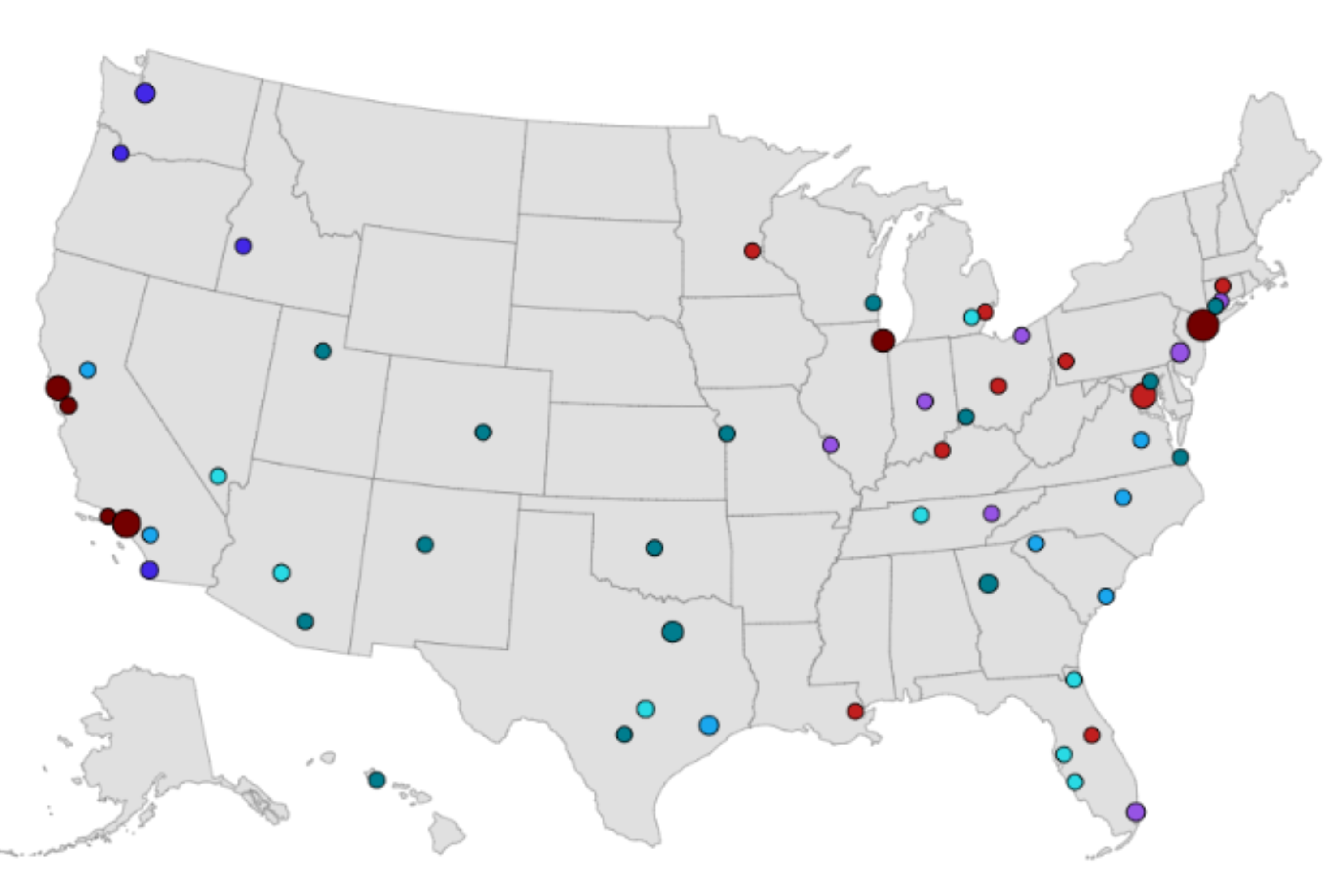The U.S. Environmental Protection Agency on Thursday set strict new limits on greenhouse gas emissions and other pollutants from power plants, setting up a high-stakes legal battle that could shape how the country gets its electricity as the climate warms and demand for power surges with renewed American manufacturing and more electric vehicles.
The rules would require existing coal-fired and new gas-fired power plants to reduce climate pollution 90 percent by 2039 and sharply cut emissions of toxic metals such as mercury. Companion rules also released Thursday would force the cleanup of two other sources of pollution from coal plants—the fly ash and wastewater that frequently contaminates soil, groundwater and waterways.
"These actions allow us to tackle the full array of threats that power plants pose to clean air, safe water and healthy land," EPA Administrator Michael Regan said in a press briefing.
Regan said the climate and health benefits will far outweigh the costs industry will face to comply with the rules. The EPA's analysis shows the carbon pollution reductions possible under the rule over the next two decades will be roughly equal to the emissions from 328 million gasoline cars over that time. In a single year, the EPA estimated up to 1,200 premature deaths and thousands of asthma cases and hospital visits would be avoided.

In addition to producing harmful soot, toxic metals and smog-causing ozone, coal is among the worst fossil fuels from a climate perspective because it releases the most CO2 per unit of energy generated.
To comply with the new EPA limits, electric utilities would likely need to shutter more coal plants or add expensive pollution controls such as carbon capture and storage, a technology that has not yet proved cost-effective at commercial scale.
Environmental groups praised the EPA's move. "The U.S. has been walking toward a safer climate and healthier air and today we broke into a run," Environmental Defense Fund President Fred Krupp said in a statement.
The response from the coal industry and coal-country lawmakers, however, was sharply critical.
"Their goal is simple: death by a thousand cuts to America's fossil fuel industry, especially coal," West Virginia Democratic Senator Joe Manchin said in a statement. Manchin's state is the country's second-largest coal producer, and he warned that the EPA's rules could undermine the reliability of the country's electricity supply just as a resurgence of domestic manufacturing is driving up power demand.
West Virginia was the lead plaintiff on a successful legal challenge to the EPA's last major attempt to rein in climate pollution from power plants, the Obama-era Clean Power Plan.
The state's case resulted in the 2022 U.S. Supreme Court ruling West Virginia vs. EPA. In a 6-3 decision, the court found that the EPA had exceeded its authority under the Clean Air Act and the justices severely curtailed the ways the agency might control greenhouse gases.
Michelle Bloodworth, president and CEO of America's Power, a group that represents the coal industry, called the EPA's new rules "extreme and unlawful," and hinted in a statement that the EPA is headed for another legal defeat.
"The new Clean Power Plan is the same kind of overreach that caused the U.S. Supreme Court to reject EPA's first Clean Power Plan," Bloodworth said.
West Virginia's Attorney General Patrick Morrisey, a Republican, has already promised to sue the EPA again and representatives from both the industry and environmental groups told Newsweek that a legal challenge is inevitable.
But the EPA's Regan said his agency learned from the earlier court battles, listened to stakeholders and adapted the new rules in ways that will meet legal muster.
"We are measuring twice and cutting once and learning from past actions and past results," Regan told reporters.
Renewable Costs Decline, Climate Concerns Rise
If the coming court challenge for the EPA is to be a rematch of the fight over the original Clean Power Plan, as Bloodworth and Morrisey indicated, it will play out against a very different energy landscape than the one America had when then-President Obama proposed his plan in 2015.
Coal power has been in sharp decline in the U.S. for the past two decades as many electric utilities have switched to natural gas and, more recently, renewable energy sources. Twenty years ago, coal generated roughly half of the country's electricity. By 2022, coal accounted for only about a fifth of electricity production, and that was before President Joe Biden's clean energy initiatives took effect.
The Biden administration's signature legislation on climate change, the 2022 Inflation Reduction Act, included the country's largest-ever set of subsidies, tax credits and other support for lower-carbon power. Administration officials said the pace of clean energy deployment has doubled.
Read more: The Pros and Cons of Solar Energy
"We now have enough clean power on the grid to supply electricity to 70 million homes," White House Senior Climate Advisor Ali Zaidi said in a briefing call with reporters. "So, this isn't a concept for the future, it's something that's showing up in communities already."

The White House said in supporting documents that projections for 2024 show that the country is set to add more electricity capacity in this year than in any of the past 20 years, and about 96 percent of that new power capacity is from clean energy.
"The reason for that is because the technology costs continue to come down," Regan said during the briefing. "Our tax policy, I think, has made it the irresistible choice to go to cleaner power."
Anne Kelly is vice president of government relations for Ceres, a nonprofit that studies and promotes climate action in the business sector. Kelly said the historic record of industry response to EPA regulations has some relevant lessons for the coming fight over the new power plant rules.
"When you look at what's happened, companies who specifically say, 'We're not going to be able to meet the standards' end up meeting the standards," Kelly told Newsweek.
Ceres recently analyzed the EPA's ability to forecast the technological progress that can enable industry to meet new air quality standards.
"EPA's record turns out to be really good," Kelly said. "It argues for EPA to set a high bar and to allow competition to take place and technology to evolve."
Some companies in the electric utility sector agree. The electric power industry is not a monolith—different companies have different fuel mixes in their fleets of power plants and different regional concerns to consider. Companies that rely more heavily on fossil fuels are more likely to oppose the new rules, while those with more nuclear, hydro power and renewable energy sources might see an advantage in the EPA's action.
In a 2023 letter to the EPA, a coalition of companies called the Clean Power Group was generally supportive of the EPA's proposed power plant rules. The group represents companies that serve about 100 million people in 47 states and includes Maryland-based Constellation Energy, which operates the country's largest fleet of nuclear power plants.
"EPA's power plant rules offer a sensible roadmap for phasing in greenhouse gas emissions reductions from the power sector, while meeting rising demand," a Constellation spokesperson said in a statement to Newsweek.
The company praised the EPA's inclusion of a pathway for using clean hydrogen and continued use of natural gas, as well as so-called "safety valve" provisions aimed at ensuring reliability of power delivery. In response to comments from the industry, the EPA carved out some short-term exceptions to the rule for gas-powered electricity if a grid system faces an emergency situation in which it is not able to dispatch enough power otherwise.
Constellation Energy ranks 20th in the energy and utilities sector on Newsweek's list of the Most Trustworthy Companies in America and 28th in the same sector on Newsweek's list of America's Most Responsible Companies.
Louisiana-based Entergy is another electric utility with a relatively low-carbon fuel mix. The company said that coal generation is a minimal part of its power sources, making up only about 8 percent of its generation last year.
"We announced in 2020 plans to retire all of our coal-powered capacity by the end of 2030," an Entergy spokesperson said in a statement to Newsweek. "This final rule allows us proceed with that commitment."
Entergy ranks 35th in the energy and utilities sector on Newsweek's list of America's Most Responsible Companies.
Power plants are the country's largest source of carbon pollution, according to the EPA, accounting for about a quarter of domestic greenhouse gas emissions. Those emissions have been slowly coming down after peaking in 2007, largely due to more efficient use of electricity and the move away from carbon-intensive coal.
That's good news for the U.S. effort to reduce emissions, but much sharper reductions will be needed to meet the targets the U.S. committed to under the 2015 Paris Agreement on climate change. But power companies will be challenged to continue to decarbonize while meeting sharply increasing demand for electricity.
Utilities project a surge in electricity consumption due to power growth in data centers, manufacturing and rising residential use as Americans electrify more aspects of their lives from home heating and appliances to EVs.
Read more: Earn Cash Back at EV Charging Stations
Climate scientists said the last year was the Earth's warmest in recorded history and early indications are that 2024 may be warmer yet. The coming power struggle over the EPA's new rules could determine whether the way we get our power will continue to drive those temperatures up or accelerate the trend of bringing emissions down.
Uncommon Knowledge
Newsweek is committed to challenging conventional wisdom and finding connections in the search for common ground.
Newsweek is committed to challenging conventional wisdom and finding connections in the search for common ground.
About the writer
To read how Newsweek uses AI as a newsroom tool, Click here.








